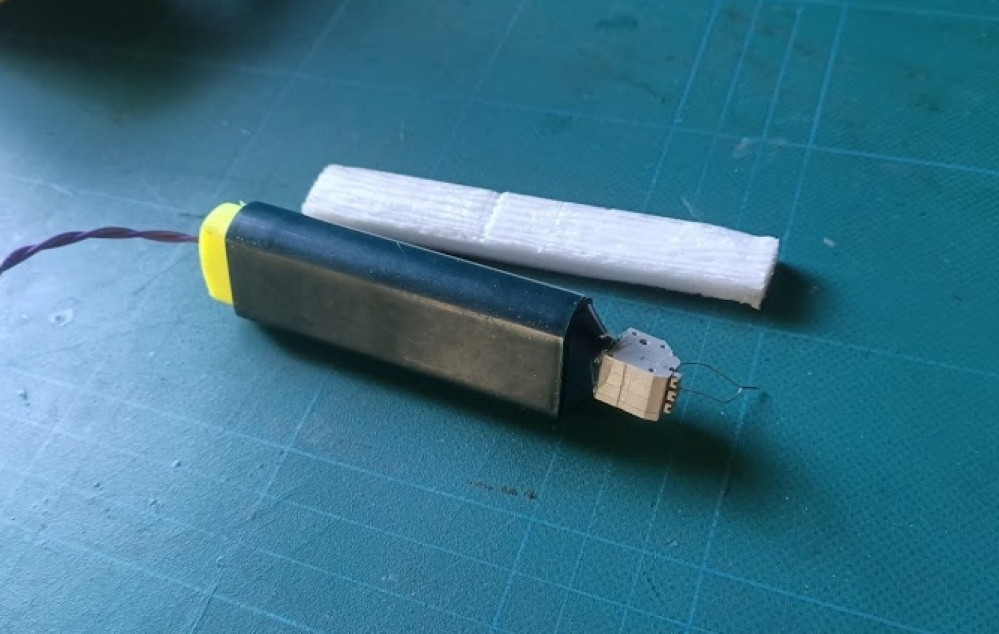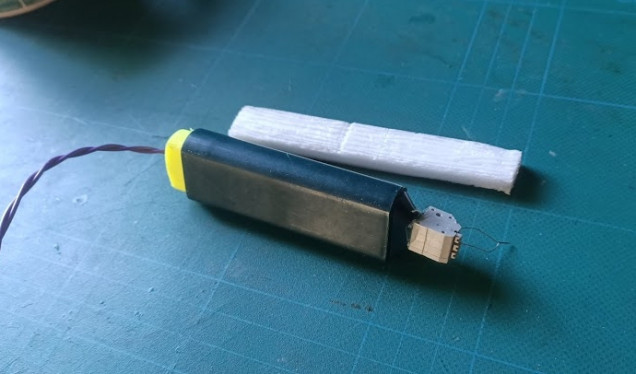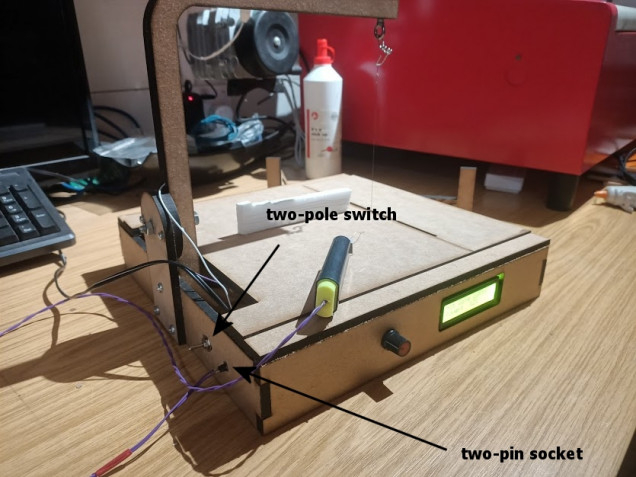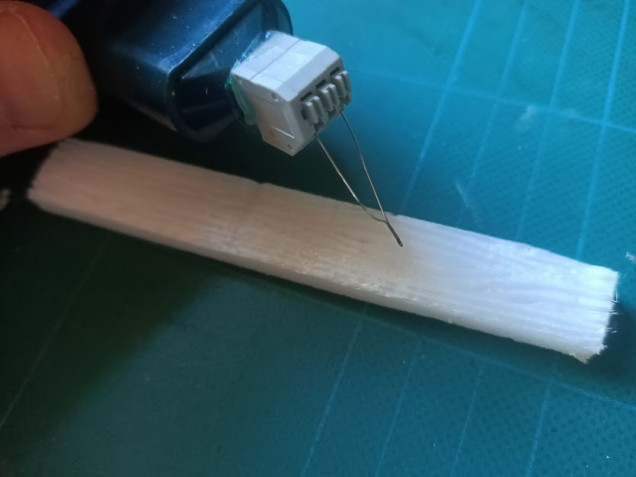
Hot wire pen for hot wire cutter
Using the existing power supply
I’d already invested more time in my hot wire cutter than I had hoped to. But I also had a variable power supply that could be used for any project, not just a hot wire.
And given that the hot wire is literally just a wire with a DC current running through it, and given that most of my electronics projects in the last six months have involved taking simple designs and trying to make them as small as possible, I figured that a tiny little hot wire shouldn’t be difficult to acheive.
So I took a highlighter pen, cut the end off and hollowed it out. Then I got out the Mr Muscle and a load of kitchen roll and cleaned up all the flourescent yellow ink that got everywhere. A hole in the bottom meant I could run a couple of wires through the body of what was once a pen.
These wires were then connected to a quick-release wire terminal block.
I had no idea how I was going to fashion a nib, other than it was most likely going to involve (yet more) vape-coil wire. But knowing that I’d likely need to change the nib (or even replace the wire if it burnt out easily) I thought it best to use a terminal block to connect it to the wires, so the vape-wire could be removed easily if necessary.
I made a small loop of Nichrome wire and pressed the centre-point with a pair of pliers, to make the bend as sharp and as tight as possible.
I then added a two-pole switch at the back of the frame and a two-pin socket. A few minutes re-wiring and the switch could now direct power either to each end of the frame (for the hot wire) or to the two pins on the back of the base.
By plugging the “hot pen” into the two-pin socket, I could power it from the same circuit I build for controlling the hot wire.
I tried the hot wire cutter, to make sure I hadn’t knackered the circuitry for the power supply, then flicked the switch.
Fzzzzt, pop! What’s that smell?
The nib of the pen glowed bright orange, then white, then split, then sparked, then nothing. Except a big plume of smoke.
It turns out that only a tiny amount of power is needed for the pen! I usually run the hot wire at between 40% and 70% from a 9V supply. But even at 40%, this was far too much for the tiny coil loop in the pen nib.
With a bit of experimenting, I found that I could “draw” on the styrofoam with as little as 4% power. Around 8%-10% gave a nice, broad line. At just 15% the nib started to glow.
It turned out to be a good job I put the easy-to-change wire terminal on the hot pen after all!





























![How To Paint Moonstone’s Nanny | Goblin King Games [7 Days Early Access]](https://images.beastsofwar.com/2024/12/3CU-Gobin-King-Games-Moonstone-Shades-Nanny-coverimage-225-127.jpg)













































Leave a Reply